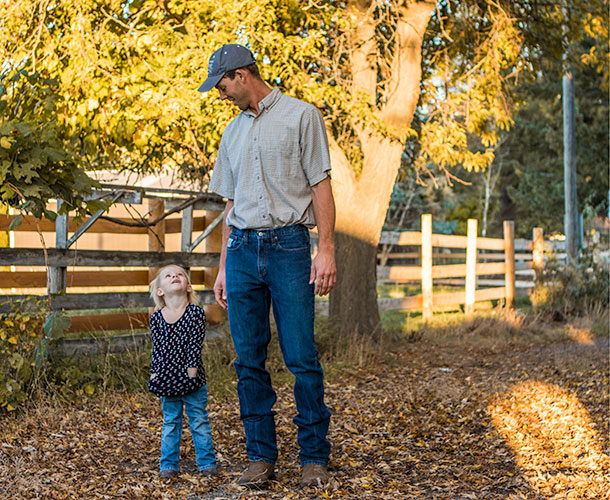People tell our story time and again with little to no input from the actual source. The result can be everything from funny to downright dangerously incorrect.
In a time when less than 2 percent of our population in the U.S. is actively engaged in farming, the time to start telling our story is yesterday, and while the task before us is huge, it is not insurmountable.
Our challenge reminds me of my time as a young boy on our family farm in southwestern Virginia. One of my least favorite tasks on the farm was hoeing tobacco. Weeding the tobacco patch was always a long, hot, hard day, and when you are a little guy, those rows of tobacco seem to go on forever. Hoeing tobacco, however, taught me a valuable lesson that has served me well past the fields of my youth.
My father would tell me not to look at the task ahead and worry about how long it would take to get done; to do so would just make you prematurely tired and upset, and would likely lead to you quitting. “It’ll ‘white-eye’ you,” Dad used to say. Dad’s message was to work steadily at what you were doing and let the results happen when they happen. Ag literacy among consumers is like that. Outnumbered 100 to 1, it would be easy to say “I give up” and walk away, but sentiment is exactly why we are where we are at this point in time. If we won’t tell our story, who will?
Agricultural literacy hinges on two main themes: trust and discernment. Building or rebuilding trust in the modern farm is not for the faint of heart. Spend a little time on social media, and you will likely find more than enough misinformation to keep you steaming for weeks! That said, the multitude of media choices is exactly where the battle must be waged. Fewer and fewer young people get their news from “the news.” They engage one another on social media and discuss topics instead of just absorbing them. Oftentimes, the missing ingredient is practical, personal, first-hand experience, and this is where each of us can help.
The second is a bit trickier. Teaching others to be discerning, fact-driven consumers is a slippery slope. In a time of Wiki-everything, facts and fiction can often come in very similar wrappers. Perhaps the best way to begin can be taken from the pages of the extension service’s past. Start as young as you can and work forward. For example, our 4-H agent in my home county refuses to let the youth who are doing presentations and demonstrations use Wikipedia as a source since it can be written and rewritten by biased persons seeking to advance a personal agenda. She tells them beforehand not to use it and why. The message is loud and clear.
Now that we have thought about the downside, here is some brighter news. As we instill agricultural literacy among the population, people who grasp the realities of modern farming will teach others. Oftentimes when we host school groups at local farms, I advise the hosts to entertain the children and preach to the adults. Winning over teachers and others in positions of recognized authority is always a winning strategy. Who has more of a bully pulpit than a classroom teacher? He or she has the ability to inject volumes of information into young minds that lasts forever. We need to ensure that messages of agriculture are accurate and that they come directly from productive farms and farmers.
Agricultural literacy helps keep farms more profitable. If consumers are trusting and discerning, then agriculture in this nation also has the ability to maintain our competitive edge. Look at the advances we have made in areas of production. We have increased corn tenfold since World War II. In that same time frame, milk production increased 33 percent. That number is more impressive in light of the fact that in 1940 there were 25.4 million cows and today there are less than 10 million animals in production.
A real challenge is the need to refrain from vilifying each other as we teach others about the realities of modern farming. I like to share with people that virtually all farms are factory farms. We manufacture food, and as such, each one of them is precious and need protecting. FG
PHOTO: It's crucial that we tell the ag story to one person at a time, over and over again. If we don't tell it, who will? Photo by Mikeal Dixon.











